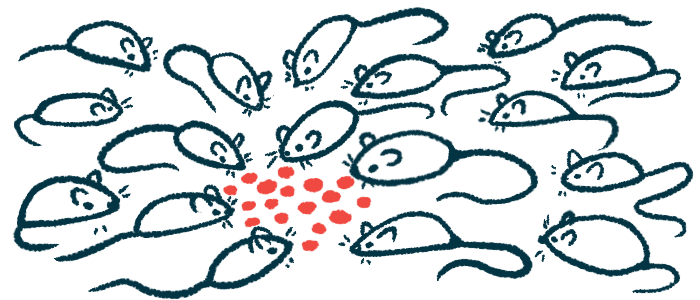Gene therapy for Dravet may need to be lifelong treatment, study finds
Seizures seen in mice with SCN1A mutation induced at differing ages
Written by |

New treatment approaches, such as gene therapies, that aim to restore the activity of SCN1A, the gene often defective in Dravet syndrome patients, must remain active throughout adulthood to adequately maintain brain function, a lab study suggests.
Using a Dravet mouse model, the work showed that activating a mutant form of Scn1a, the mouse version of the gene, at different ages resulted in similar Dravet symptoms. These findings suggest that Scn1a restoration during early brain development alone is insufficient to maintain efficacy over time.
“Long-lasting restoration of Scn1a gene expression would be required to grant optimal clinical benefit in patients with Dravet syndrome,” the researchers wrote in the study “Temporal manipulation of the Scn1a gene reveals its essential role in adult brain function,” published in the journal Brain.
Study questions whether restoring NaV1.1 early in life will be sufficient
Nearly all cases of Dravet are caused by defects in the SCN1A gene. The gene provides instructions for producing a protein that is part of NaV1.1, a sodium channel found on neurons that controls the flow of sodium ions into cells, activating them and allowing them to pass along nerve signals.
NaV1.1 is mainly produced in inhibitory GABA neurons, which silence other neurons. Defects in NaV1.1 are thought to alter sodium flow, impair GABA neuron function, and lead to the uncontrollable firing of other neurons and episodes of prolonged epileptic seizures, typically beginning in the first year of life.
Current treatment options for Dravet can reduce the number and severity of seizures. Still, they cannot wholly control epileptic seizures or delay the development of neurological symptoms. As such, experimental disease treatments, including gene therapies, are being developed to restore the SCN1A gene or NaV1.1 activity.
Scientists at the IRCCS San Raffaele Scientific Institute, in Italy, recently demonstrated that restoring the activity of Scn1a, the mouse version of the gene, suppressed seizures and normalized behavior in mice, even after the onset of symptoms.
Building on these findings, the team wondered if Scn1a also is required during brain development that takes place after birth, or whether ensuring adequate levels of NaV1.1 early in life “is sufficient to prevent or mitigate Dravet symptoms.”
Researchers used a Dravet mouse model in which a mutant version of the Scn1a gene could be activated at any time, and the outcomes of delayed activation could be compared. Mutant Scn1a gene activation was set two days after birth (P2) to mimic the disease’s typical early onset in children, or at 30 days (P30) or 60 days (P60) after birth, mouse ages similar to human adolescence and early adulthood.
Seizures seen in mice with Dravet induced in infancy and adulthood
Like classic Dravet mice, all P2-induced mice developed spontaneous seizures over two weeks. Sudden, unexpected death in epilepsy, known as SUDEP, occurred in four mice.
Likewise, 80% of P30-induced mice developed spontaneous seizures similar to those seen in the P2 group, and two died of SUDEP. In the P60 group, seizures started 10 to 30 days after mutant Scn1a gene induction.
There was no difference in the number and frequency of seizures among P2 and P30 mice, while P60 mice experienced significantly more seizures, with a trend toward a higher frequency, than P2 mice. Seizure duration was similar across all groups.
All Dravet mice (P2, P30, and P60) experienced a seizure when their body temperature was raised to 44 ºC (111 ºF), whereas a few healthy mice — a control group — developed seizures, but only at very high temperatures. Accordingly, P2 mice died of SUDEP, starting around the second week and peaking around the third, while P30 mice began to die around 40 days later and P60 mice around 80 days later.
The team confirmed that mutant Scn1a activation at P2, and the onset of symptoms, coincided with impaired function of inhibitory GABA neurons. In the same way, the onset of symptoms in P30 and P60 Dravet mice occurred alongside GABA neuronal dysfunction.
In behavioral tests, all mice showed signs of hyperactivity and anxiety, regardless of the age of Dravet activation. No differences in repetitive behaviors, such as body rotations and grooming, were seen, but P60 mice tended to perform better in exploratory behavior than P2 mice. Social interaction deficits, characteristic of Dravet mice, also were observed in P30 and P60 mice.
Delays in mutant Scn1a activation, however, appeared to influence cognitive abilities. P2 mice showed the most affected learning abilities, P30 mice had intermediate scores, and P60 mice had scores comparable to control mice.
These findings suggest that “a transient Scn1a reinstatement during the critical window of postnatal brain development is not sufficient to prevent most adverse Dravet [symptoms],” the scientists concluded.
“Sustained Scn1a expression throughout adulthood is needed to adequately sustain brain functions and, consequently, therapeutic protocols should be designed for continuous Scn1a expression to prevent impoverishment of the clinical benefits,” they noted.







